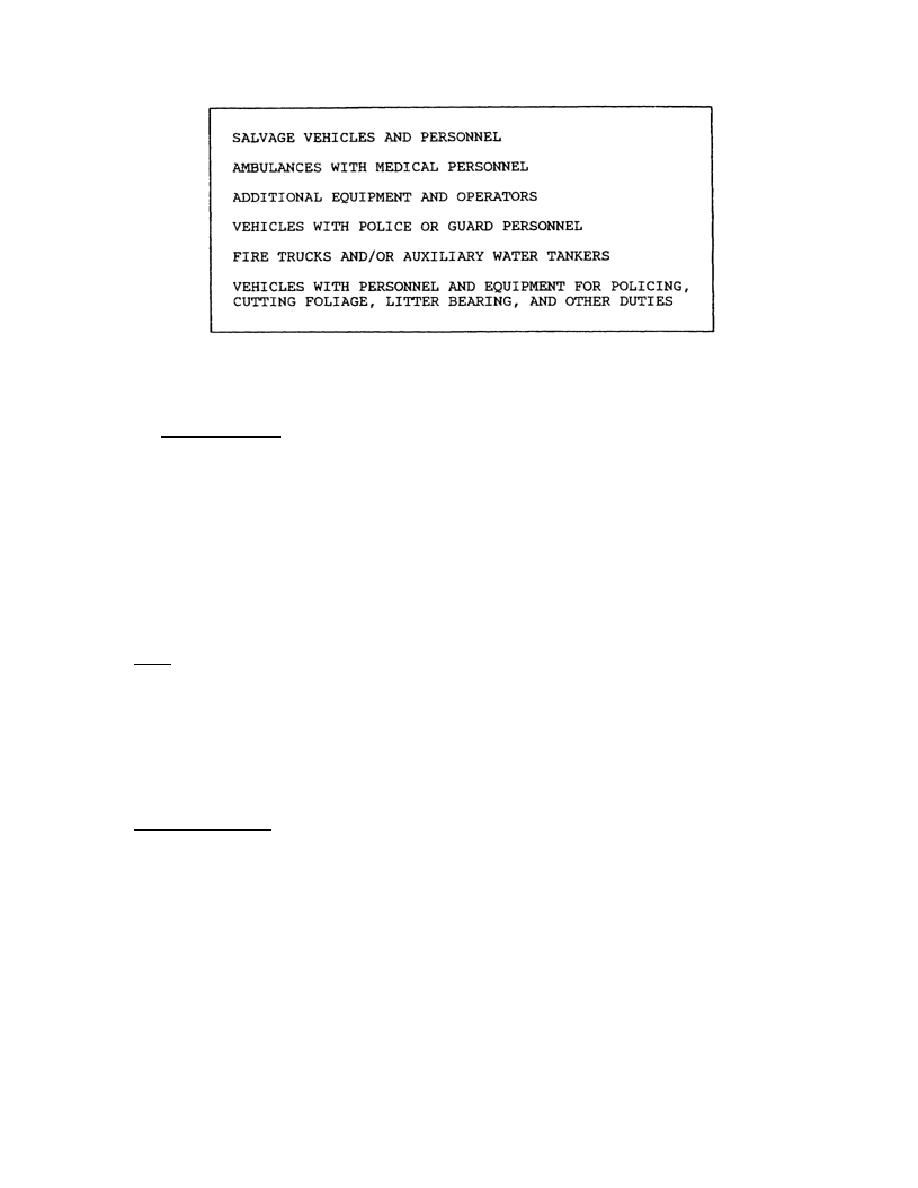
Figure 1-5. Convoy Composition.
(4) Local assistance. Request local civilian firefighting equipment, ambulances, and personnel
when feasible. Contact the state highway patrol or local police to escort the convoy along the route to
the accident scene.
7.
SEARCH AND RESCUE
The National Search and Rescue (SAR) Plan establishes responsibilities and procedures for SAR
operations conducted within the United States. The National SAR Manual, a joint publication of various
military services and civilian agencies, is available to Army activities as FM 20-150. Responsible
agencies and procedures for SAR are listed below.
a. FAA. The FAA provides emergency service to aircraft in distress. If an aircraft becomes
overdue or is unreported, the FAA assures initiation of SAR procedures for aircraft on IFR flight plans,
initiate SAR procedures through the ATC system. For aircraft on visual flight rules (VFR) flight plans,
initiate SAR procedures through FAA communication systems. The FAA attempts to locate overdue or
unreported aircraft by information request (INREQ) and alert notification (ALNOT) communications
search. The FAA also cooperates in the physical search by making all possible facilities available to the
searching agencies.
b. Military Agencies. Military agencies conduct physical SAR operations, but the primary
responsibility rests with the USAF Air Rescue Service. The US Army and other military services may
furnish aircraft and crews to aid the Air Rescue Service in making a physical search. Commanders of
US Army aviation units are authorized to participate in SAR operations under the provisions of AR 95-
1. The National SAR Plan assigns the USAF and
16
AV0695



 Previous Page
Previous Page
